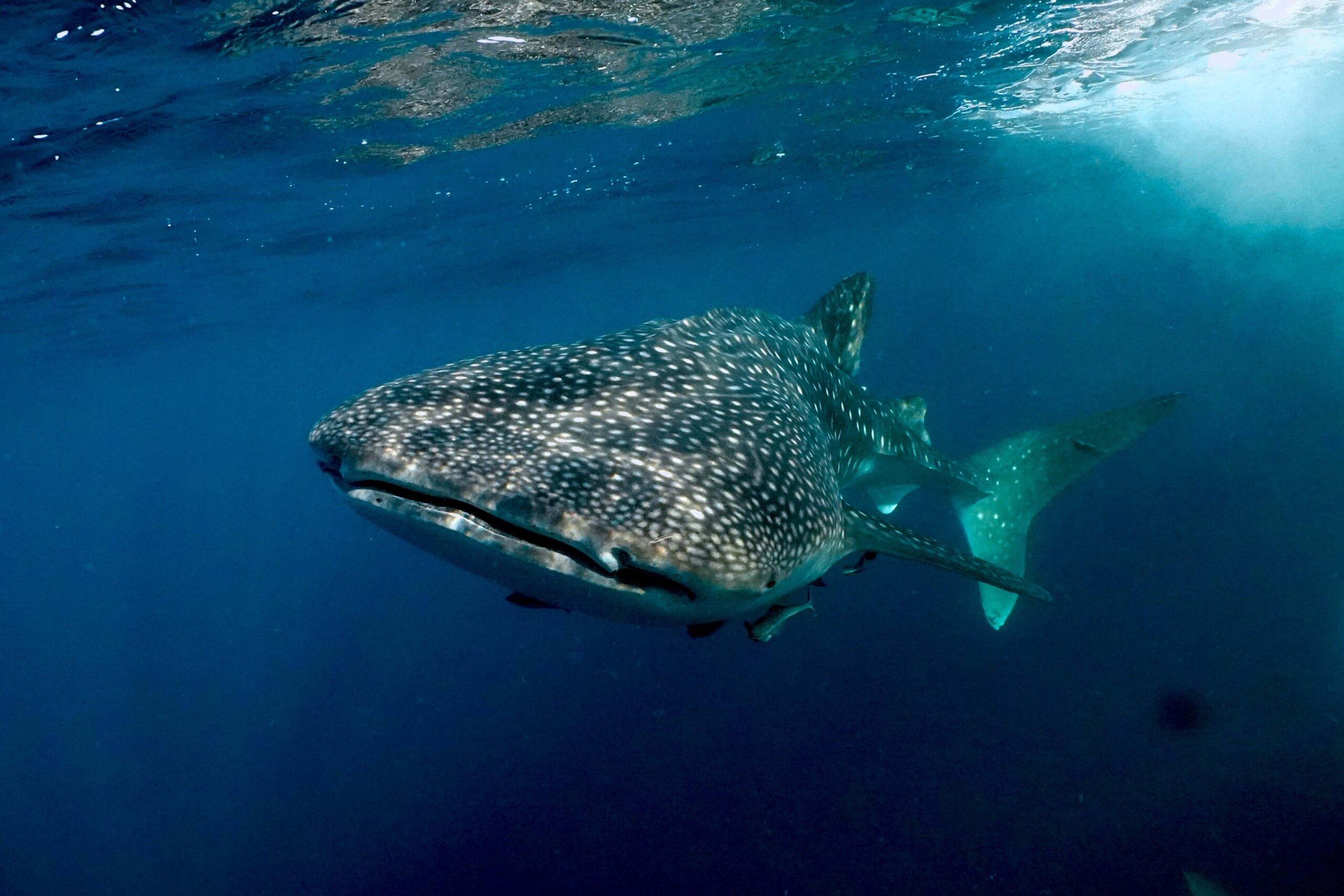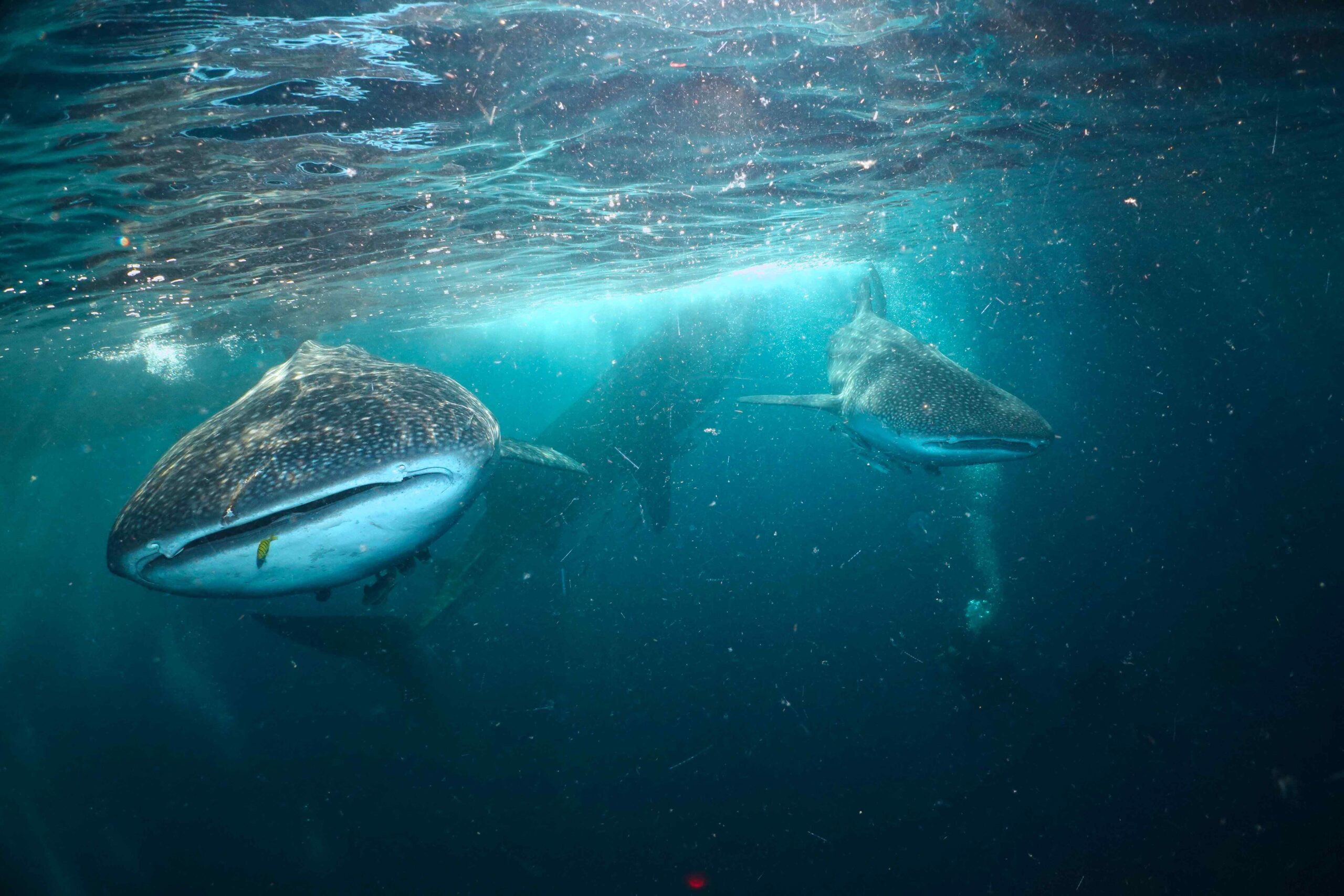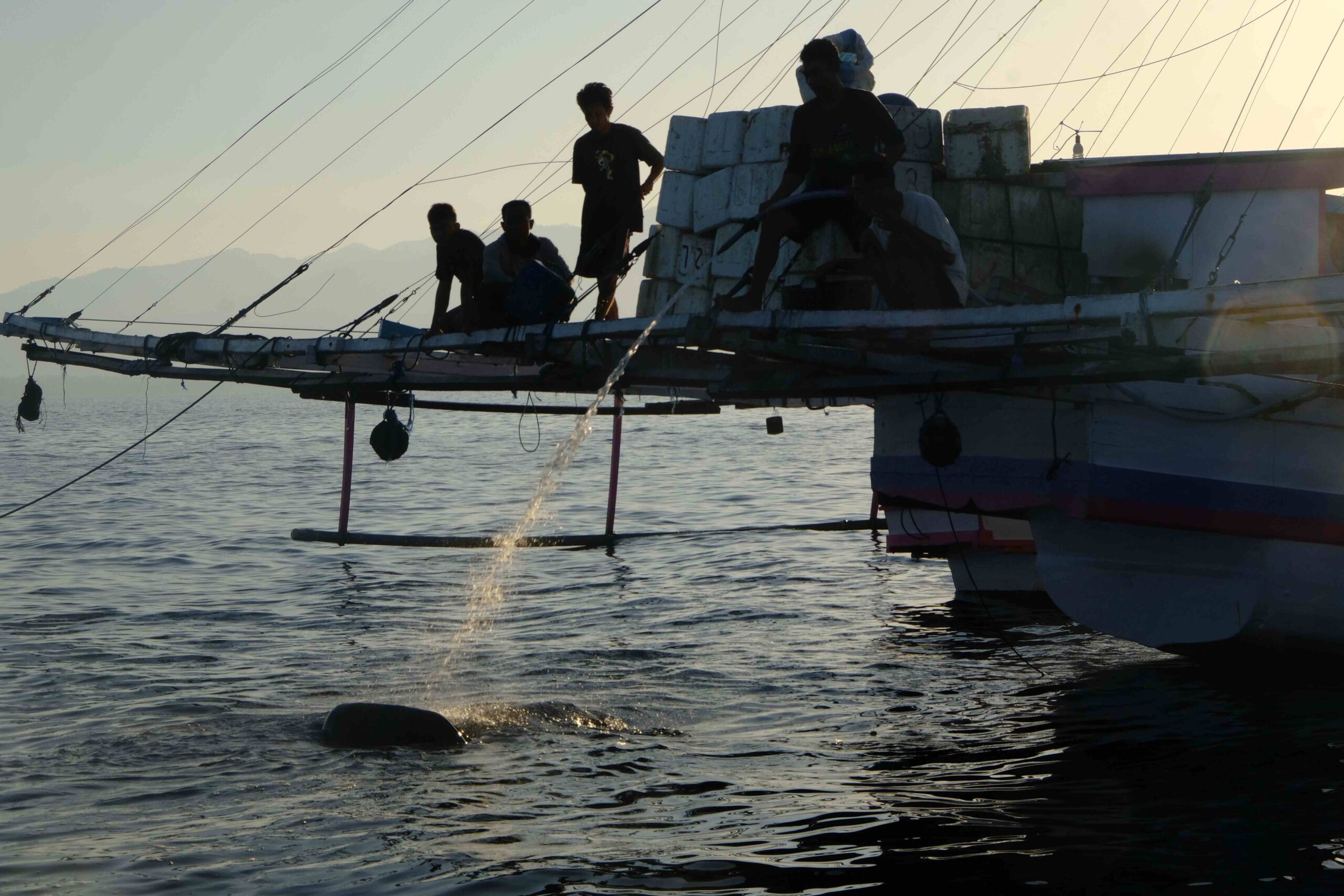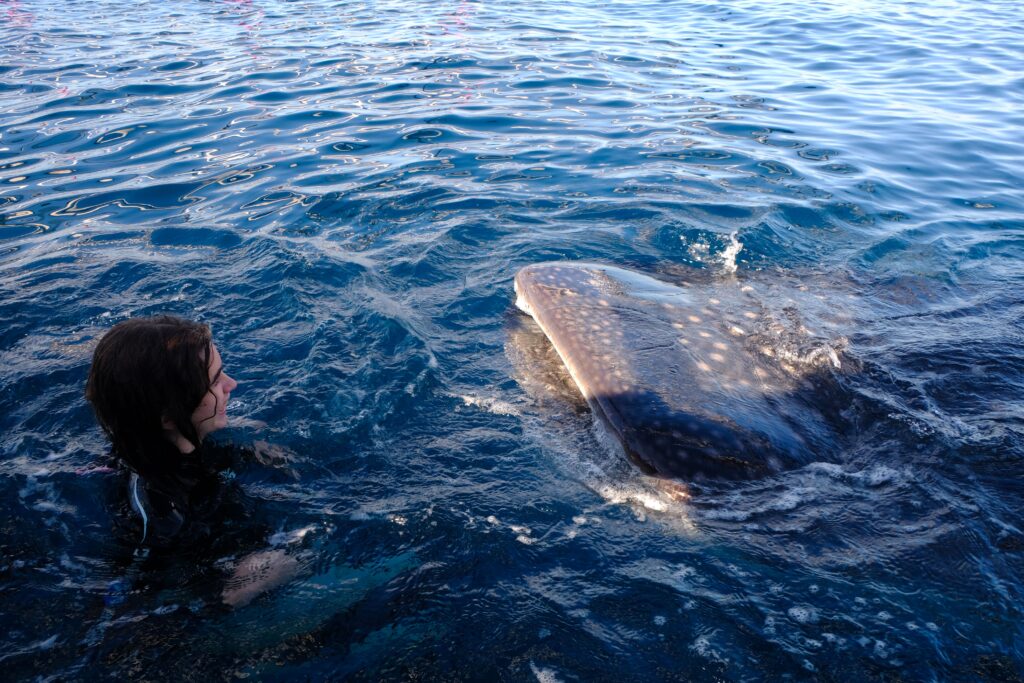I never imagined that admiring such creatures could move me so deeply. I have always been touched by the grace and strength of marine animals, whatever their kind. But the whale shark brings a special kind of emotion, comparable to the feeling one gets when watching a child lost in their imaginary world.
They radiate a sense of serenity: their wide, slow movements, their fearless closeness, and the way they seem entirely unbothered by our presence make for a truly unique experience for anyone lucky enough to observe them.
1) Who are whale sharks?

The whale shark (Rhincodon typus) is the largest living fish in the world. As adults, they can reach 12 to 14 meters in length and weigh over 20 tons.
Key characteristics
- Size and morphology: a massive, elongated body, with a flattened head and an enormous mouth that can measure up to 1.5 meters wide.
- Unique markings: a gray-blue back covered in spots and pale lines, creating patterns unique to each individual — a true fingerprint that scientists use to identify them.
- Feeding mode: a peaceful filter-feeder, it feeds on plankton, larvae, eggs, and small fish by filtering huge volumes of water through its gills.
- Behavior: calm and placid, sometimes curious toward divers and boats.
Biology and life cycle
- Lifespan: between 70 and 100 years.
- Migrations: great travelers, they roam long distances following plankton blooms and fish spawning grounds.
- Reproduction: still poorly understood; what we do know is that whale sharks are ovoviviparous (the young develop inside the uterus before being born alive).
Local names in Indonesia
- Hiu paus: “whale shark.”
- Hiu bodoh: literally “gentle/innocent/naïve shark,” a nickname given by fishermen because of their placid nature.
2) Where to see them in Indonesia?

Indonesia is one of the best countries in the world to observe whale sharks. They are found in several regions where encounters are frequent and often predictable.
Main observation sites
- Teluk Cenderawasih (Papua, Kwatisore/Nabire): iconic site, almost daily visits near the bagans.
- Triton Bay (Kaimana, West Papua): plankton-rich waters, frequent encounters.
- Teluk Saleh (Sumbawa, West Nusa Tenggara): aggregations around fishing platforms.
- Berau/Talisayan (East Kalimantan): regular presence, linked to anchovy fishing.
- Gorontalo (Tomini Gulf, Sulawesi): marked observation season between November and May.
- Raja Ampat (West Papua, especially Misool): rarer but possible sightings.
- Alor and Flores: occasional presence, especially during plankton upwellings.
Why are some considered “residents”?
While whale sharks usually migrate over long distances, some populations in Indonesia seem resident (present almost year-round in Triton Bay, Gorontalo, or Sumbawa).
The main reasons:
- Food abundance: strong currents and upwelling make Indonesian waters exceptionally rich in plankton, small fish, and larvae.
- Presence of bagans: these fishing platforms attract schools of anchovies (puri), a regular and easy food source.
- Warm and sheltered waters: bays such as Cenderawasih or Saleh provide a protected habitat, ideal for feeding and growth.
- Limited fishing pressure: since the official protection of whale sharks in Indonesia (2013), hunting has ceased, encouraging their residency.
Thus, some individuals choose to remain in these food havens, sometimes observed daily for months or even years.
Remarkable fact: Satellite-tagged whale sharks in Cenderawasih Bay spend nearly 82% of their time there each year, showing that this region is not just a migratory stop, but a true haven of residency.
3) Traditional fisherman, bagans, and “hiu bodoh”

In several regions of Indonesia, fishermen’s lives are closely linked to whale sharks. This connection is most evident around bagans, large floating wooden platforms suspended above fishing nets. Seen from above, they resemble giant spiderwebs. At night, they glow with bright lamps that attract anchovies (puri) and other small fish essential to local communities.
Did you know?
A typical bagan measures about 9 × 9 meters, with nets capable of holding tons of small fish — a real feast for curious whale sharks, though also a potential entanglement risk.
Drawn by this abundance, whale sharks approach and sometimes suck up the fish around the nets. While harmless, this behavior can cause problems: the animal may get tangled in ropes or damage the nets, threatening the catch.
To avoid this, fishermen have developed the habit of throwing part of their catch directly into the whale shark’s mouth. At first a purely pragmatic solution, this practice has over time become a ritual, blending practicality with spirituality.
👉 Important note: This gesture is sometimes misunderstood by visitors, who see it as a way of “feeding to attract” whale sharks for tourism. While it is true that this practice has been commercialized in some regions to the detriment of animal welfare, its original purpose had nothing to do with tourism and continues to be carried out regardless of visitor presence.
In local maritime tradition, the whale shark is seen as a messenger of sea deities. Offering it fish is considered a sacred gift, honoring the ocean, ensuring the protection of sailors, and bringing abundant catches.
It is in this context that the affectionate nickname hiu bodoh was born, literally “gentle” or “innocent” shark. This name highlights its peaceful nature, its disarming trust, and its familiar presence around the bagans — almost like a silent companion to life at sea.
But such closeness has a downside. By being regularly fed, some whale sharks become habituated and alter their natural behavior: they linger near platforms instead of migrating, which makes them more vulnerable to injuries, boat propellers, and unregulated tourism.
👉 The bagans thus embody the full ambivalence of the human–animal relationship: at once a risk, an unintended form of protection, and a strong cultural symbol of a unique coexistence between fishermen and the giants of the sea.
Encouraging figure: In May 2024, surveys in Cenderawasih National Park identified 203 individual whale sharks — a slight increase from the previous year, offering a glimmer of hope for local conservation.
Whale Sharks and the Jakaré Jewelry Collection
The whale shark has even become the emblem of the Jakaré jewelry collection, with our signature piece inspired by their silhouette. Their serenity, trust, and grace are qualities we sought to capture in a timeless design — a way to carry the spirit of these gentle giants with us long after the voyage ends.

Exclusively available onboard, the Jakaré Jewelry Collection cannot be purchased elsewhere. Each piece is designed as a personal memento of the journey, making it not just jewelry, but a living memory of encounters with the ocean’s most gentle giant.











Read More